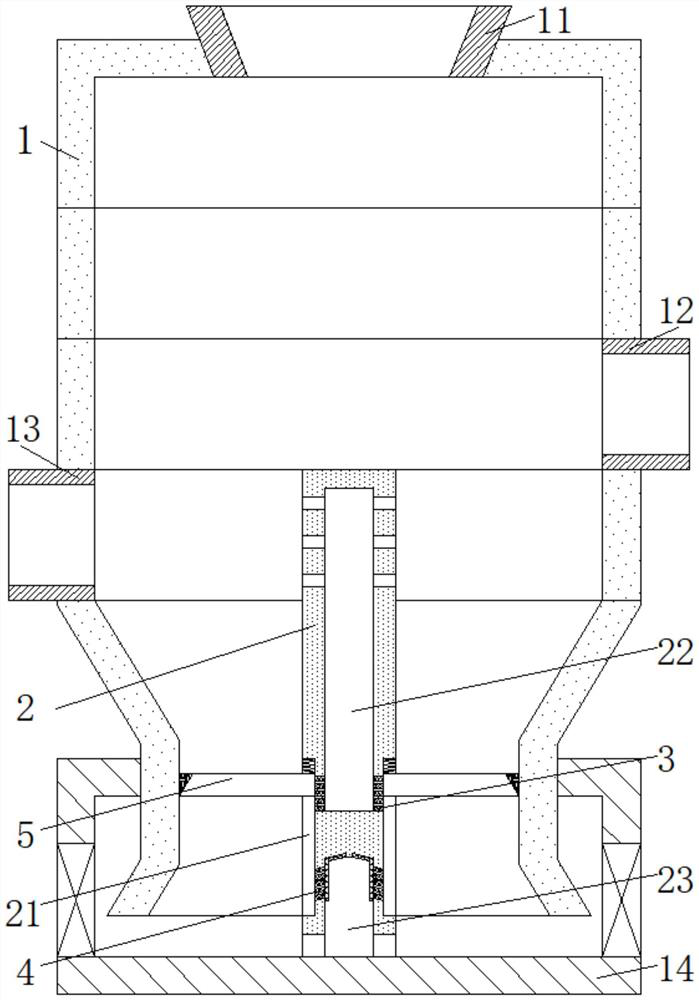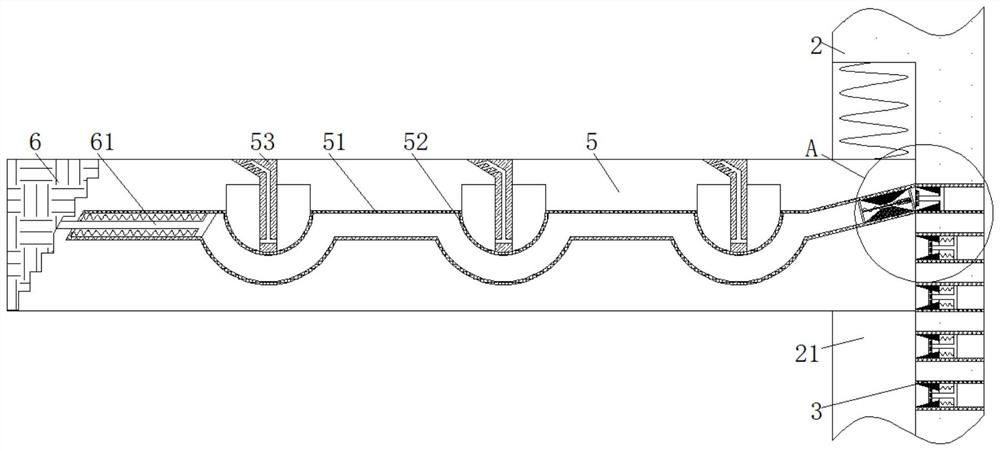Wet-type deslagging device of biomass gasifier
A gasifier, biomass technology, applied in the manufacture of combustible gas, petroleum industry, etc., to achieve the effect of improving the service life, increasing the contact time, and increasing the weight of ash and slag
- Summary
- Abstract
- Description
- Claims
- Application Information
AI Technical Summary
Problems solved by technology
Method used
Image
Examples
Embodiment Construction
[0029] The technical solutions in the embodiments of the present invention will be clearly and completely described below with reference to the accompanying drawings in the embodiments of the present invention. Obviously, the described embodiments are only a part of the embodiments of the present invention, but not all of the embodiments. Based on the embodiments of the present invention, all other embodiments obtained by those of ordinary skill in the art without creative efforts shall fall within the protection scope of the present invention.
[0030] see Figure 1-Figure 3 , Figure 8, a wet slagging device for a biomass gasifier, comprising a furnace body 1, the interior of the furnace body 1 is divided into five areas from top to bottom, and specifically a drying area, a cracking area, an oxidation area, a reduction area and a discharge area. In the ash hopper, the top of the furnace body 1 is fixedly sleeved with the feeding part 11, the furnace body 1 in the oxidation ...
PUM
 Login to View More
Login to View More Abstract
Description
Claims
Application Information
 Login to View More
Login to View More - R&D
- Intellectual Property
- Life Sciences
- Materials
- Tech Scout
- Unparalleled Data Quality
- Higher Quality Content
- 60% Fewer Hallucinations
Browse by: Latest US Patents, China's latest patents, Technical Efficacy Thesaurus, Application Domain, Technology Topic, Popular Technical Reports.
© 2025 PatSnap. All rights reserved.Legal|Privacy policy|Modern Slavery Act Transparency Statement|Sitemap|About US| Contact US: help@patsnap.com



